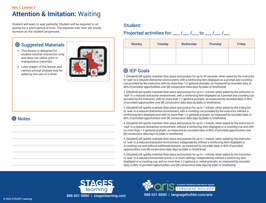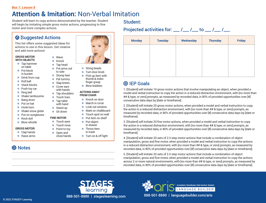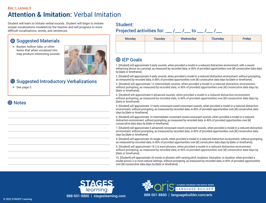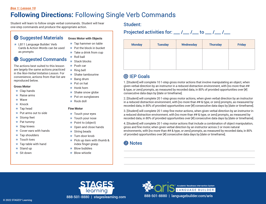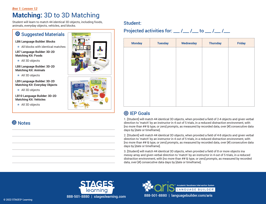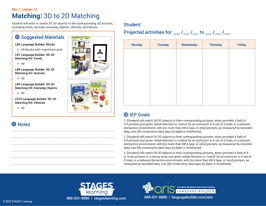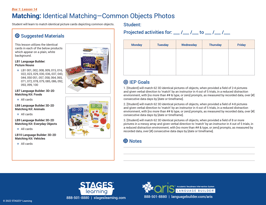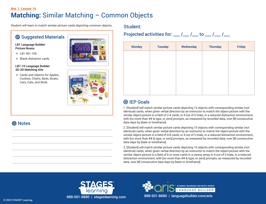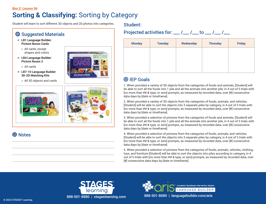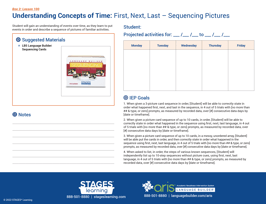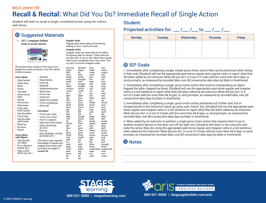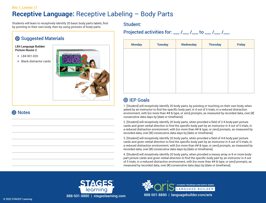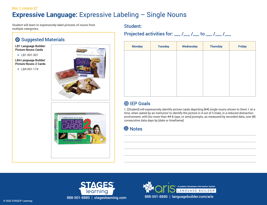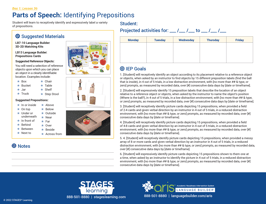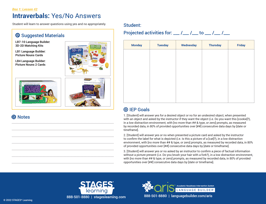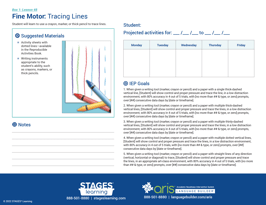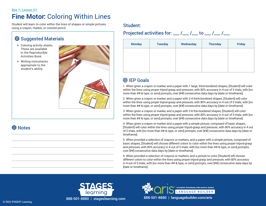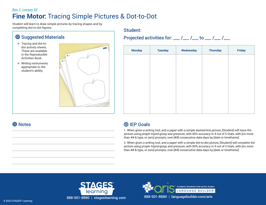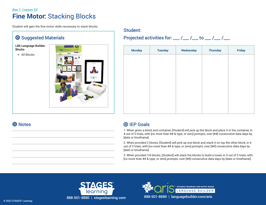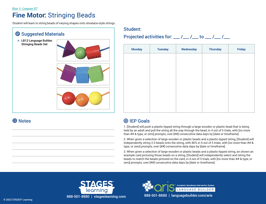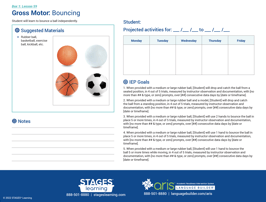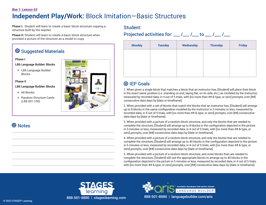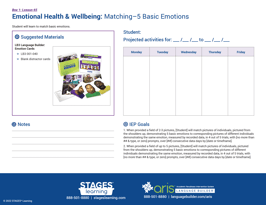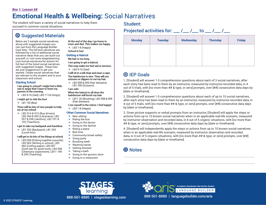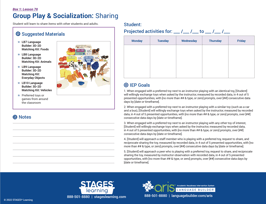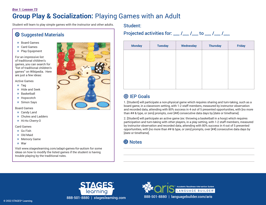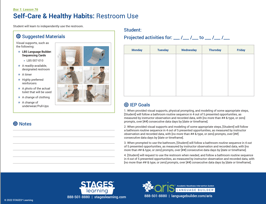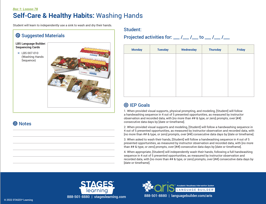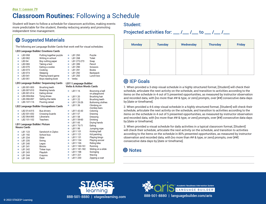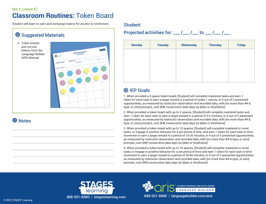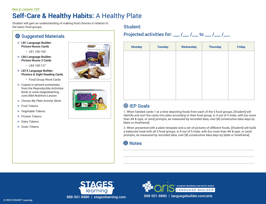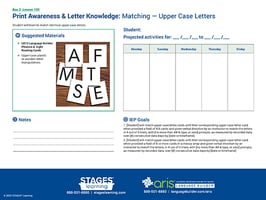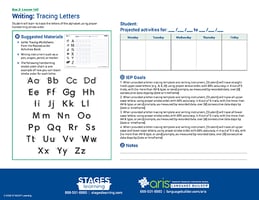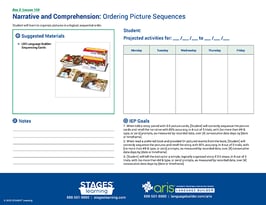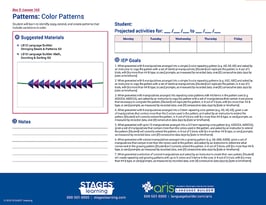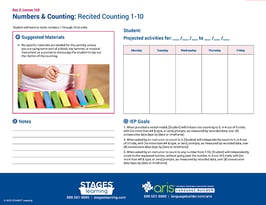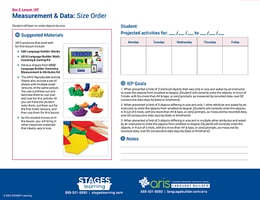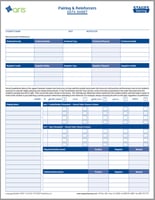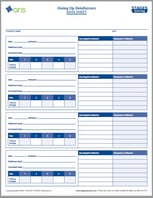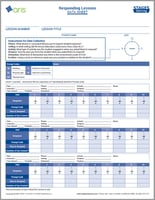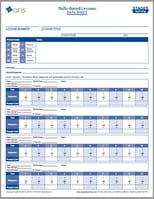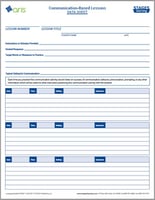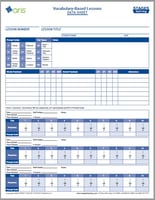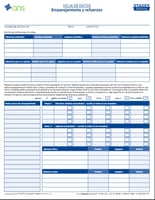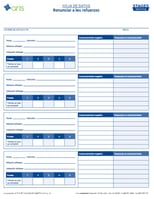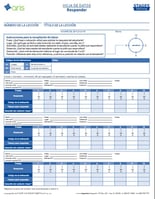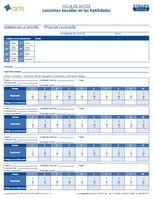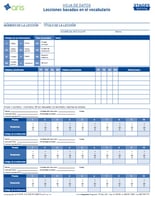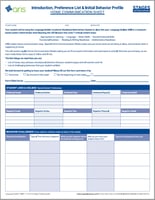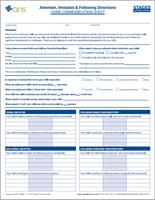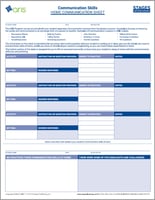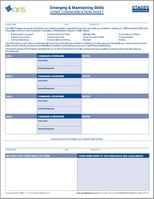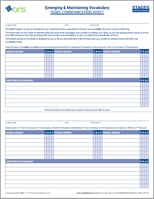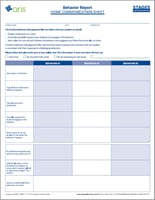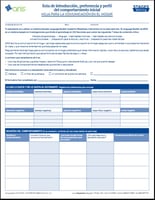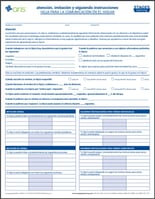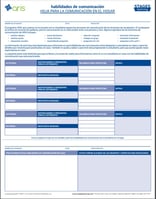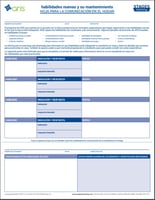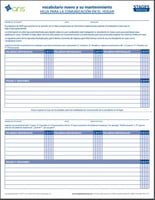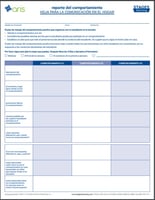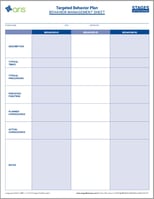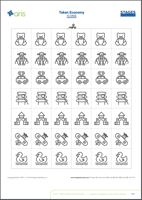ARIS Curriculum Sample Lessons & Materials
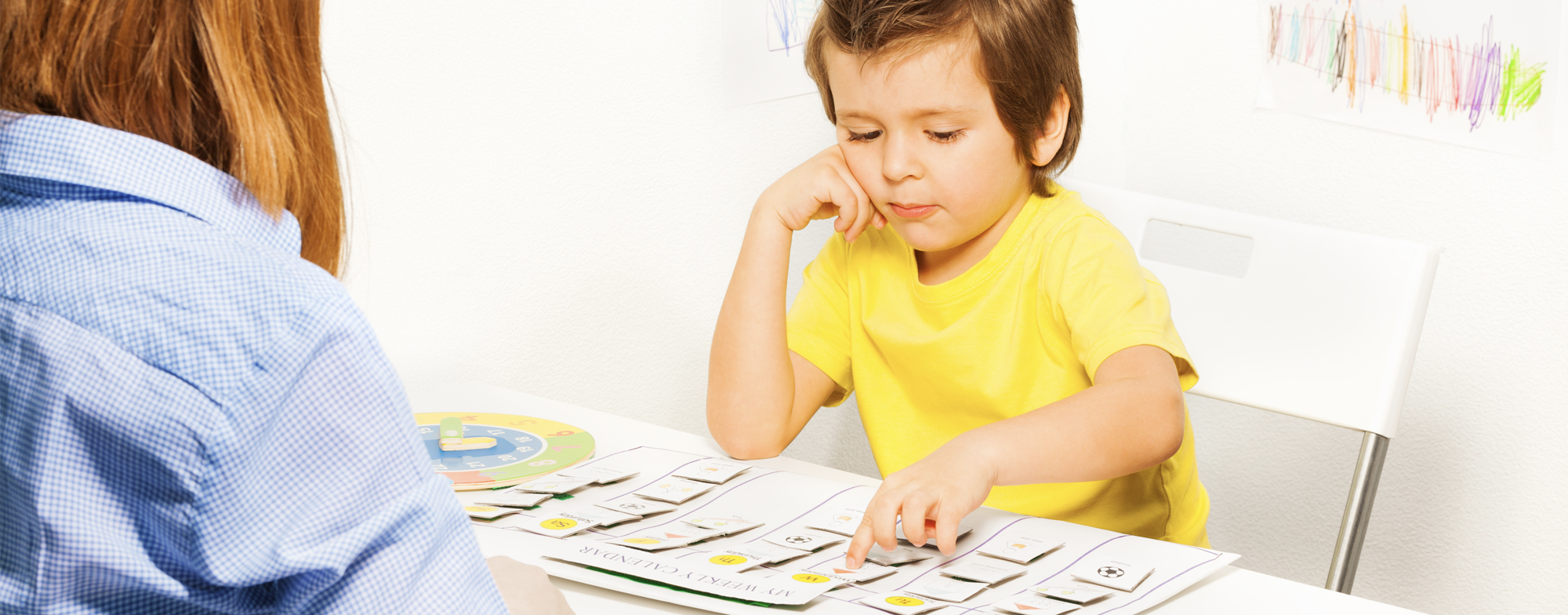
We know that it has become more and more challenging to find curriculum and resources to teach the growing population of students with autism or related learning challenges. Teachers are stretched thinner than ever, and its hard to spend time searching for quality teaching tools! Stages Learning wants to make your life just a little easier, so we have assembled this Free Language Builder ARIS Resource Kit to help you meet the challenge of educating and engaging students with autism or other special needs, using a limited budget.

Empowering Educators
These free lessons, materials, activity sheets, data tracking sheets, behavior management tools, combine to offer a basic overview of how to use the system. It is our hope that they can serve as an introduction to the full ARIS curriculum. These materials offer a sampling of lessons from Stages Learning’ Language Builder ARIS curriculum. The lessons and supporting materials are 100% free to educators to download, print, use and share. We recognize that students with special learning needs have fallen even further behind in recent years. And we know that educators are taking on more students, more responsibilities, with fewer resources. By providing access to our Language Builder ARIS Curriculum, we offer you an opportunity to access detailed lesson plans, supporting materials, and a guide to adapt these materials and expand the learning.
Using your sample ARIS Lesson Plans and Materials
The Stages Learning Resource Overview provides introductory materials with practical guidance on using and adapting the provided sample ARIS lesson plans and materials to your classroom, as well as actionable ideas on how to leverage some of your existing teaching tools build on all of the the free picture cards we have included with this kit.
Stages also offers weekly open office hours where you can come once, or every week, to get direct answers to personalized questions about how to implement ARIS free resources in your classroom, and receive support and guidance on teaching your unique students.
Language Builder ARIS Manual - Abbreviated for Home Use
We have created an abbreviated version of our full Implementation Guide focussing on the quick implementation of the sample lessons we are offering. Specifically, this version of the ARIS Implementation Guide includes:
- an overview of the ARIS lesson format
- a section with simple explanations of discrete trial education
- a behavior management section (so important!)
- activity sheets that you can use with selected fine motor, math & reading lessons
Lesson Plans: 34 Downloadable Lessons for Early Autism Education
Language Builder ARIS is divided into 7 content categories, each with several subcategories. We are providing you with a few lessons from each of the content categories to give you a broad range of activities and skill levels. The ARIS Introductory Materials, described in the Do-it-Yourself Education Program Overview above, offers ideas for how to build on the provided lessons so you can cover even more content.
Picture Cards: 56 Language Builder Picture Cards for Download
As this free resource is based on the existing Language Builder ARIS curriculum, many of the ARIS Lesson Plans we provided for you reference Language Builder Picture Card Sets. We have posted links to samples of the cards from each of these sets that you can download for free to support learning. In the Introduction Letter we offer guidance on how to take or find additional pictures to build upon what we have given you.

From our Founder
I founded Stages more than 20 years ago. While I have been thrilled that Stages' products have been able to help so many students and families, never has that need felt so urgent. My heart goes out to all of the educators fighting to provide the very best for their students. I hope we can ease just a touch of your stress by making these materials available. Happy teaching!
Angela Nelson
Founder & CEO
Stages Learning

Implementation Guide
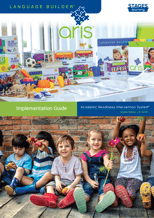 Language Builder: ARIS is specifically designed to meet the needs of students with moderate to severe Autism Spectrum Disorders (ASD) and is appropriate for students with a range of developmental or cognitivedisabilities. The lessons in ARIS follow a logical progression that covers language, pre-academic, motor, social, and self-help skills that are critical to the academic and the personal development of all students.
Language Builder: ARIS is specifically designed to meet the needs of students with moderate to severe Autism Spectrum Disorders (ASD) and is appropriate for students with a range of developmental or cognitivedisabilities. The lessons in ARIS follow a logical progression that covers language, pre-academic, motor, social, and self-help skills that are critical to the academic and the personal development of all students.
In general, the lessons in the ARIS curriculum are best suited for students from preschool through elementary school, but many lessons will be appropriate for older students with more severe impairments or challenges in specific areas.
Lessons
Approaches to Learning Lesson Plans
Lesson #7
Waiting
Lesson #8
Non-Verbal Imitation
Lesson #9
Verbal Imitation
Lesson #10
Following Single Verb Commands
Lesson #12
3D - 3D Matching
Lesson #13
3D - 2D Matching
Lesson #14
Following Single Verb Identical Matching
Lesson #16
Similar Matching Common Objects
Lesson #96
Sorting by Category
Lesson #100
First, Next, Last Sequencing Cards
Lesson #103
What Did You Do? Recall of Single Action
Language Lesson Plans
Motor Skills Lesson Plans
Lesson #48
Tracing Lines
Lesson #51
Coloring Within Lines
Lesson #52
Tracing Simple Pictures and Dot to Dot
Lesson #53
Stacking Blocks
Lesson #57
Stringing Beads
Lesson #59
Bouncing
Social Emotional Lesson Plans
Lesson #70
Go to Lesson Tips
Lesson #73
Playing Games with an Adult
Go to Lesson Tips
Functional Routines Lesson Plans
Lesson #76
Go to Lesson Tips
Lesson #78
Washing Hands
Go to Lesson Tips
Lesson #79
Following a Schedule
Go to Lesson Tips
Reading and Writing Readiness Lesson Plans
Math Readiness Lesson Plans
Lesson #165
Go to Lesson Tips
Lesson #168
Recited Counting 1-10
Go to Lesson Tips
Lesson #189
Size Order
Go to Lesson Tips
Flash Cards
Nouns
Occupations
Emotions
Data Keeping Sheets
Pairing & Reinforcers
Data Sheet
Giving up Reinforcers
Data Sheet
Responding Lessons
Data Sheet
Skills-Based Lesson
Data Sheet
Communication-Based Lessons Data Sheet
Vocabulary-Based Lessons
Data Sheet
Pairing & Reinforcers
Data Sheet - Spanish
Giving up Reinforcers
Data Sheet - Spanish
Responding Lessons
Data Sheet - Spanish
Skills-Based Lesson
Data Sheet - Spanish
Home Communication Sheets
Introduction, Preference List,
& Initial Behavior Profile
Attention, Imitation, &
Following Directions
Communication Skills
Emerging & Maintaining Skills
Emerging & Maintaining Vocabulary
Behavior Report
Introduction, Preference List, & Initial Behavior Profile - Spanish
Attention, Imitation, & Following Directions - Spanish
Communication Skills - Spanish
Emerging & Maintaining Skills - Spanish
Emerging & Maintaining Vocabulary - Spanish
Behavior Report - Spanish
Behavior Management Tools
Daily Behavior Tracking
Weekly Behavior Tracking
Targeted Behavior Plan
Token Economy Icons

To support the lessons we give you in the DIY ARIS Free Resource offering we have included a variety of photo cards you can get started with, including a selection of Nouns, Occupations, Emotions, Sequencing and Verb Cards. When you download and print these cards (maybe even laminate them), you will have a good starting selection of photo materials to start teaching with.
The goal of the full Language Builder ARIS Autism & Early Learning Curriculum is to assemble in one place all the lessons and materials a teacher needs to carry out an effective personalized learning program with his or her students. However, if you do not have the full kit in your classroom, you may notice that many lessons will reference specific products from the Language Builder series which you may not have immediate access to, particularly among the 3D manipulatives. We have provided some useful ideas on this page that are designed to help you source or create some of these materials yourself so you can expand the content you teach in each lesson.
Tips for Augmenting Your Free Language Builder Photo Cards
At the core of many Language Builder ARIS Lessons are realistic photo cards. The full ARIS kit includes over 1200 picture cards, including Nouns, Occupations, Emotion, Sequencing and Verbs. In this free resource, we have given you a selection of cards to start with. If you can’t bring the actual Language Builder Card sets into your classroom, you can use a couple of hacks to add to your photo collection,
Take your own pictures
You can take photos with your digital camera or cell phone, then print these pictures on a color printer or at a photo print shop. CVS and RiteAid are two locations that have a service where you can upload your images online and then pick them up in an hour. Amazon even has a photo printing service, so you can have images sent directly to your home or school. Here are a few tips to help you take the best images to use with your ARIS lessons:
Minimize Background Distractions
For the picture below: Is it shoes? A hand? A plant?
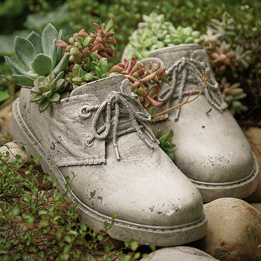
Use Natural Light
Natural light is the easiest way to get a good picture without a professional lighting set-up. The best way to do this is by using what is called "open shade." pOen shade is anywhere that is shaded from direct sunlight but still has ambient light around it. In other words, you don’t want to be deep in a dark shaded area, you need to have light around it so that the area is “open” to the light.You want an area not in direct sunlight, but with the sunlight very close. A good example is when the sun is blocked by a building wall rather than a patio cover.
Crop & Adjust
You can crop and adjust photos easily on your phone, so the original shot doesn't have to be perfect. Or, if you want to dig in a little deeper, Adobe has super simple, free photo cropping tool. Here are a few tips to keep in mind when cropping your pictures:
- Simplify the background: Crop the image to remove any unnecessary or distracting elements from the background. A clean and simple background helps students focus on the main subject of the image.
- Emphasize the subject: Make sure the subject of the image is large and clearly visible. You may need to crop closely around the subject to ensure it is the main focus of the picture.
- Use clear, high-quality images: Start with high-resolution images that are crisp and clear. This will help maintain quality after you crop the image.
- Maintain aspect ratio: When cropping, maintain the original aspect ratio of the image to avoid distortion. Many image editing tools provide an option to lock the aspect ratio while cropping. hint: aspect ratio is just a fancy word for the relationship between the width and height of an image, expressed as two numbers separated by a colon, such as 4:3. The first number represents the width, and the second number represents the height.
- Include context: While it is important to minimize distraction,iIf the image is meant to teach a concept or skill, it needs to give enough context for the viewer to understand the intended message, like a plumber with a wrench by a sink.
- Use a consistent style: If you are creating a series of images for educational materials, maintain a consistent style in terms of cropping, colors, and layout to make the materials visually cohesive and less distracting. The Language Builder Cards are all 3.5 x 4.875 inches, and almost always presented horizontally. If you want to maintain consistency with your free Language Builder Picture Cards, you may want to maintain that format.
Don't be overwhelmed
Of course this does take a bit of your precious time, but you don’t have to take all the pictures in one day. If a student is learning to label noun pictures, they might not learn more than a few words a week. If they are learning the words more quickly, then perhaps you can use less formal ways to teach the vocabulary, such as picture books or tablet apps.
Use an online stock-photography site
You can find images to supplement your free Language Builder Cards free by searching stock photography websites. These sites offer a wide variety of high-quality images that can be used for educational purposes. Some popular free stock photography websites include:
- Unsplash (unsplash.com)
- Pexels (pexels.com)
- Pixabay (pixabay.com)
- Burst by Shopify (burst.shopify.com)
- Freepik (freepik.com) - Note that while many resources on Freepik are free, some may require a subscription.
When searching for images on these sites, use specific keywords related to the educational topic you're focusing on, to find the most relevant images. For example “red apple on table with white background.” Some sites are better than others when it comes to getting good pictures and for targeted searches. iStock, Shutterstock and Adobe are consistent favorites, and you can usually get a 30-day free trial, before paying a monthly subscription fee.
Why would anyone use one of the paid sites rather than the free ones? It generally has to do with the rights to the images. You don't need to sell these, so you should be ok.
A quick note on sourcing pictures: Lesson 14 requires 2 identical pictures and Lesson 16 requires multiple pictures of the same item. So, it may be a good idea, if your student is at this lesson-level, to save yourself some time by printing duplicates and maybe taking or finding pictures of a few different shoes, cups, chairs, etc.
Share
Crafty teachers always seem to share their resources. You can consider dividing up the work, and then sharing the pictures among your colleagues. If you find the prepositions, and someone else finds the opposites, you can cut your time in half!
Tips to Find Manipulatives to Use in Selected Lessons
Several of the lessons mention the use of 3D objects such as toy foods, animals, vehicles, blocks, etc. Lesson 12 for example requires two identical objects from several categories. To start, things like matching cups, bowls, plates, or silverware work really well (plastic is a good idea... ok... a must). Then you can move on to classroom toys. Do you have two matching toy cars? Two plastic horses? You want to use common objects that you will be teaching the name of later. For the plastic foods, our 3D Matching Food Kit actually uses the kind of foods that they use in house staging or furniture stores. It is the most realistic I have seen yet. You can find these on Amazon, or you may want to try the dollar store. You will need 2 identical items for each one you teach in Lesson 12.
Lesson 13 asks the student to match the 3D object to the picture of the object. You can refer back to the photo sourcing section, and take a picture of each 3D object that you used in Lesson 12.
Two of the Lessons (53 & 63) require blocks, and Lesson 63 requires pictures of blocks. You can use any blocks you probably have around the house and take pictures of various structures from 2 to 20+ blocks, depending on your child's progress. It's actually kind of fun. My best tip on this is to tack a white sheet to the wall, and let it drape onto the floor so the effect is something like the image at right.
Lesson 92 asks you to find "sorting bears." You probably already have something like this in your classroom.
Nearly all of the Fine Motor lessons require activity sheets, and these are included in the back of the abbreviated implementation guide that we provided.
Lesson-Specific Tips for Implementing Language Builder ARIS Free Resource Kit
I truly hope that the downloadable Language Builder ARIS lessons have been a helpful teach tool for your classroom!
When we made available these 34 downloadable lessons from our Language Builder ARIS curriculum. We worked hard to include a variety of activities across the widest range of content possible. We gave you a sampling of picture cards to support the lessons, and guidance on how to build a rich library of materials to expand your students’ learning experience. You should check back to this site often, as we will continue to provide tips and support, and add more and more free resources!
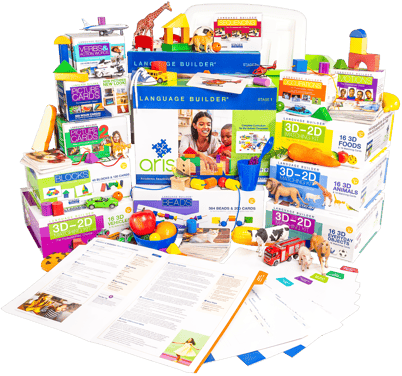
The following is a list of lesson-specific tips to help you successfully implement the materials we have provided thus far, as well as a brief description of how to adapt some of the lessons to cover a wider range of content.
Approaches to Learning
Attention & Imitation
Lesson 7 - Waiting
This is a great place to start. Even if your child can successfully use their waiting skills at school they may need extra practice do so at home, particularly given their recent change in routine. Start off small... maybe 2-3 seconds... then gradually work up to a couple minutes.
Lesson 8 - Non-Verbal Imitation
This can be a fun one! It is an important skill for children to learn, as imitation provides the foundation for learning bigger skills. You can play “do this” and use simple or silly actions. It's a great way to engage your child and may also help you both get some energy out.
Lesson 9 Verbal Imitation
This can can also be a fun and silly game. Verbal imitation is a critical first-step for building language skills. Make a game out of it using by using silly nonsense sounds and have your child repeat the sounds and make their own for you to repeat.
Following Directions
Lesson 10 - Following Single Verb Commands
This is the next step after non-verbal imitation. Think of “Simon Says” as an example. Give simple one step directions that your child can imitate such as “clap your hands” or “touch your head”. Start with the actions that your child does well with in the non-verbal imitation.
Matching
Lesson 12 - 3D to 3D Matching
This is the first step in teaching matching. Try to find objects your child knows and can easily handle. You can grab toy cars out of the playroom or spoons or any other everyday object you have two of. A really good place to start with this activity is with items that "nest" such as bowls, cups or spoons. For more ideas on finding materials for this and the rest of the matching lessons, visit our article on Do-it-Yourself Materials for ABA Based Lessons.
Lesson 13 - 3D to 2D Matching
Once your child can match the physical objects, the next step is matching the object to a picture of the object. You can take pictures of the items you used for the 3D to 3D matching to use with this lesson. If you want to make it more advanced, you can take pictures of areas or items around the house and have your child find them and match them.
Lesson 14 - Identical Matching of Common Objects Photos
Print a second copy of the pictures you used in the 3D to 2D matching exercise to start. Then, you can print duplicates of the picture cards that are provided with this Emergency Resource Kit.
Lesson 16 - Similar Matching of Common Objects
When your child is able to match identical objects have them match non-identical objects such as toy cars that are not the same, a plastic spoon with a metal spoon, different shoes etc. The last 6 pictures that we included in your free Language Builder Cards download are of 6 different cats. This is an example of what we mean by "similar images." Following the advice offered in the article Do-it-Yourself Materials for ABA Based Lessons, you can either take your own pictures or go to one of the suggested stock photography sites to find similar pictures of other things like chairs, spoons, apples, birds, beds, flowers, bikes, cars, etc.
Sorting & Classifying
Lesson 96 - Sorting by Category
Start small with items your child knows and finds interesting such as toys or clothing and have them sort these items into categories. A few common categories include: animals, foods, vehicles, clothing, or toys. Start with broad categories like these, then when your child starts to understand the concept, you can refine the categories to things like fruits v. meats, cars v. airplanes, etc.
Understanding Concepts of Time
Lesson 100 - First, Next, Last Sequencing Cards
Concepts of time help children feel a sense of agency and predictability about their environment and their schedule. We often start with “first-then”. For example: “First we are going to clean up and then we can go outside”. When you have introduced this lesson in a formal setting, you can continue to reinforce the idea of First, Then, Next, Last throughout the day. You may actually find a reduction in negative behavior.
Recall & Recital
Lesson 103 - What did you do? Immediate Recall of Single Action
This is the next step in teaching time and its relation to activities. This can be taught in the moment following an activity by asking your child, “What did we just do?”. Keep it simple and immediate. As your child starts to get the idea, you can increase the amount of time between an activity and asking them what they did. Ultimately, we want to work toward a typical conversation such as "What did you do at school today?" "We went on a field trip."
Language
Receptive Language
Lesson 17 - Receptive Language: Body Parts
An example of Receptive Language is when a child can identify the word or label by pointing to it. Your child "receives" the language you have spoken, then acts in a way to let you they understand. For this lesson, you can have your child point to body parts they know. You can make this into a silly game by seeing how fast they can go or playing “head, shoulders knees and toes”. Keep it to larger body parts to start e.g.: head, arm, leg and move on to smaller ones like fingers, toes, ears, etc.
As described above, we have carefully selected lessons that can easily be adapted to cover a wider range of content. Following the receptive language phase that uses pictures, as described on the full ARIS lesson, you can substitute a wide variety of content for a good deal more receptive vocabulary building. Using the free downloadable images we have provided, along with the material you have assembled, you can adapt this lesson to teach Receptive Noun Labeling, Receptive Identification of Familiar People, Receptive Verbs, Receptive Colors, Receptive Shapes, Receptive Identification of Occupations & Community Helpers, and Receptive Identification in Books and the Environment.
Expressive Language
Lesson 27 - Expressive Labeling - Single Nouns
Expressive Labeling is when a child can tell you the name of an item when you ask them "what is this?" You can have them label toys, items around the house, or things in your yard. Stick to items your child is interested in to keep them tuned in.
Again, we selected this lesson because it can easily be adapted to cover a wider range of content. You can substitute different photos and objects to teach Expressive Body Parts, Expressive Identification of Familiar People, Expressive Verbs, Expressive Colors, Expressive Shapes, Expressive Identification of Occupations & Community Helpers, and Expressive Identification in Books and the Environment.
Parts of Speech
Lesson 36 - Identifying Prepositions
Start this one off by having your child move an object to a position in relation to something else. For example: “put the car on top of the plate”. You can move on to make this a more active game and have them move to different positions. For example: “Stand in front of the couch”.
Intraverbals
Lesson 42 - Yes/No Answers
Intraverbals are the types of language where your your child responds appropriately with words to something you say to them, as in a typical conversation. Intraverbal behavior can be tough to learn for some kids... especially if they tend to be echolaic, which is when they repeat noises and phrases that they hear. Someone with echolalia might only be able to repeat a question rather than answer it.
As frustrating as it may sometimes be, echolalia is actually a natural part of language development. Consider a toddler repeating words they hear (and not always the words you want them to repeat!). Rather than try to prevent it completely, you may be able to use it to build communication.
In this lesson, Yes/No Answers, you may say to your child "is it an apple?" Instead of answering "Yes," they respond by repeating the question "Is it an apple?" You can start by asking the question more quietly, then modeling the answer more loudly for your child to echo: "Is this an apple? --- Yes." Your child repeats "Yes." Slowly increase the volume of your question and decrease the volume of your prompted response:
"Is this an apple? --- Yes."
"Is this an apple? --- Yes."
"Is this an apple? --- Yes."
"Is this an apple? --- Yes."
Continue like this until your child can answer the question without the prompt.
Motor Skills
Fine Motor
Lesson 48 - Tracing Lines
We included several fine motor drawing, tracing and coloring lessons, and gave you the activity sheets to go along with them. The activity sheets for lessons 48, 49, 51, and 52 are in the back of the abbreviated instruction guide we provided with your free resource kit. You can also, simply, draw straight lines, curvy lines and zigzag lines for your child to trace. Keep the lines simple to start if your child is just starting to use pencils or crayons. You can also use thicker paper or index cards to make the paper easier to hold. Alternatively, you can do these activities on a dry erase or chalk board.
Lesson 49 - Shape Tracing
As with the Tracing Lines activity, we included several activity sheets to go along with this lesson, which are in the back of the abbreviated instruction guide in your free resource kit. Shape tracing is simply an extension of the line tracing activity. In ABA, we break down actions into very small components. This is a great example of this strategy: first learn to draw a line, then a shape, then a picture, etc. Don't worry too much about proper tripod grasp at this point. You can use Shaping to help develop this skill a little at a time. There is a great section on Shaping in the ABA Basics Section of the abbreviated instruction guide.
Lesson 51 - Coloring Within Lines
You can add this lesson on to the shapes your child traced in Lesson 49. Just have them color the shapes in. Focus on having your child try to “fill the space” and make broad strokes with the crayon or markers. Or, you can use the activity sheets we provided in the abbreviated instruction guide.
Lesson 52 - Tracing Simple Pictures and Dot-to-Dot
We provided activity sheets for this lesson in the abbreviated instruction guide. You can also find easy dot-to-dot activity sheets online of your child’s favorite character for them to start with.
Lesson 53 - Stacking Blocks
This activity is about the fine motor skill of grasping and stacking blocks. It is not about creative play. Lesson 63 focuses on the skill of playing with blocks. For this activity, you can use any blocks: large wooden blocks, foam, or interlocking blocks. Use whatever your child can easily handle, is interested in, and you have on hand.
Lesson 57 - Stringing Beads
You can start with large wooden beads and move on to using smaller plastic beads like those used to make kids' bracelets or necklaces. If a string is too difficult for your child to handle, you can try using pipe cleaners which are sturdier and may be easier for your child to manipulate.
Gross Motor
Lesson 59 - Bouncing
Ball play helps children develop both coordination and muscle skills. Obviously, this is an activity that might not be suitable for the home environment when the weather prohibits you from going outside. If available, a garage space or a covered patio may provide a good alternative.
Social Emotional
Independent Play & Work
Lesson 63 - Block Imitation - Basic Structures
Use any blocks you have on hand. Keep it simple, by using two or three blocks to start. As your child improves the ability to replicate your structure, you can move on to more creative designs like houses or animals. We have a free Language Builder: Blocks App that you can use to make this activity even more fun. The app offers pictures that go specifically with our Language Builder Block imitation product, but you don't need to have our specific blocks to use the app. The app allows you to take pictures of your own block structures and add them to the library. Then, if you want, you can use the timer-feature to time how long it takes your child to build the structure. The kids have fun trying to beat their best time! This can be a fun activity for your child to share with their siblings. The app is available for iPad or iPhone. I apologize it is not available on android or other platforms at this time.
Emotional Health & Well-being
Lesson 65 - Matching 5 Basic Emotions
Happy v Sad - identical matching
Use pictures to start for early learners. Using identical pictures is usually the easiest, moving on to non-identical pictures. Among the pictures we provided in your free Language Builder: Emotions Cards download are 2 happy cards and 2 sad cards. You can print 2 identical copies of each of these and start by having your child match the identical happy pictures when presented with those two pictures and a sad picture, and then the identical sad pictures against a happy picture.
Happy v Sad 2 - matching different pictures
When your child is able to match the identical happy pictures, you can ask them to match 2 different happy pictures, so they start to understand how to recognize the way a happy face looks. Then, you can follow the same process using the sad pictures. To expand upon this activity, take pictures of family members or friends making each of the faces (happy, sad, angry, scared, disgusted). Make sure to ask your model to wear a solid color shirt and to stand against a white background, so the pictures are similar to the ones we have provided.
This document is a work in progress. We will continue to update it through tomorrow (3-26-20) until we have tips for all of the lessons, but I didn't want to wait to publish, as I know you all can use as much information as possible.
Functional Routines
- Coming soon
Reading Readiness
- Coming soon
Math Readiness
- Coming soon
